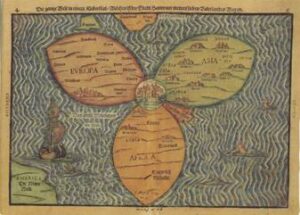Here are the statistics for the year 2020 as reported by WordPress. I’ve been phasing out Google analytics because Google is collecting too much personal information.
Top Countries
There were 205,492 page views, a 29% increase over the previous year. There were 88 posts, nearly triple the number in 2019, during which I had severe health problems. There were 47,673 viewers, averging 4.13 pages/visit.
The top ten countries by page views were:
- United States
- Brazil
- United Kingdom
- Canada
- Chile
- Australia
- Sweden
- Poland
- Greece
- Germany
There were a total of 168 countries, although quite a few were marginal. The US accounted for a little more that a third of page views. I was heartened to see the increase from South America, where I believe there is a natural affinity.
Popular Posts
I was both surprised and disappointed by the most popular posts. Only four original posts from 2020 made it to the top 10:
- Esoteric Scholasticism
- Esoteric Initiatic Centers
- Tour Guide through the Ruins
- Kerouac and the Faustian West
The old war horse Natural and Supernatural Happiness from 2oo7 somehow made it into the top 10.
Four very old Evola posts, including one translation and three letters, somehow got into the top 10; I’ve been trying to deemphasize Evola, but some people don’t forget.
Referrers
I am disappointed by the referrers. By far, Internet searches accounted for the bulk of the searches, and very few from third party sources. Social media — facebook and twitter — accounted for the rest of the referrers. That means that self-promotion is the best source of visits, and very few come from independent sources. I console myself with this tidbit of wisdom from Don Quixote.
In a contest that is subjectively judged (e.g. a poetry competition), one should try to win second place. First place is usually won based solely on reputation or trading favours, while second place is justly won.
Hence it is likely that the most quoted sites depend on the reputation of the author rather than on actual content. On the other hand, there are advantages to flying low.
The Trefoil
The final top 10 post is Persian Traditions in Spain. I’m curious about these readers because I never hear from them. Michael McClain has never had such a wide reach. I did him a favor by promoting his work, which he had written over the course of decades. Since it depended on Rene Guenon, Seyyed Hossein Nasr, and Henry Corbin, inter alios, I considered it to be of interest. It is certainly a unique take on the Islamic influence on Spanish spirituality.
He used to write me letters and call me several times a week, until I sent him a text he misunderstood and objected to. Now he acts like we never have met. That is yet another example of someone who can parrot all the words, yet lack actual esoteric understanding. I’ve come to expect betrayal and he is hardly the worst.
Since I’m in a Corbinesque frame of mind tonight, I’d like to consider these thoughts from Israel Shamir:

On the many-coloured Hans Buenting Map (1581), our world looks like a flower; its three petals present the three continents of Europe, West Asia, Africa, united by the Holy Land. The map allows for a different reading, too: the flower is the faith of Christ and Our Lady, and the three petals are Islam, Catholicism and Orthodoxy. While the Westerners preferred to view Islam as an antithesis of Christianity, Eastern Christians, notably St John the Damascene, considered Islam as another Christian Church, on a par with the Western Catholic Church. Indeed, Islam with its veneration of Christ and Sitt Maryam is not farther away from Orthodoxy than icon-less priest-less anti-Marian Calvinists. The three churches offer different readings of the same concept: the Orthodox stress Christ Resurrected, the Catholics concentrate on Christ Crucified, and the Muslims follow the Holy Spirit. The Orthodox rejection of filioque is their additional link with Islam; theological proximity grounded in geographical proximity.
The Left and the Right are only positions on the social axis, important as they are. But there are two other axes, the Axis of Spirit and the Axis of Earth, or the Axis of Christ and the Axis of Our Lady. Together they form the three-dimensional cross described by Guenon in his Symbolism of the Cross. Our enemies are able to form unions over the Left-and-Right divide for they are united in their negation of Christ and rejection of the Virgin. Likewise we should be able to unite with other people of Spirit and of Earth despite differing social views.
The unfortunate counter-example to this fantasy is in the Balkans. Croatia, Serbia, and Bosnia could be the three petals, but they seem to be in a permanent state of cold war.
Shamir makes an interesting point about the filioque. Without it, the Father is, in effect, the “real” God, not dependent on the other persons. He is prior to any essence and is unknowable, That is why the Father is more like Allah, as he concludes.
It makes me a little funny that probably a large percentage of visits from Chile are mine.
In any case, I really appreciate the work you do, as it has benefited me enormously in my own life, and surely in that of many others as well. It is incredible how quickly time passes, and 2021 does not seem to herald a time of peace, given these critical times in which we live. Despite this, my best wishes to all of you, may the light of the Lord illuminate your lives and may the Blessed Virgin hold you in her arms.